THE FUTURE OF GPS
PORTABLE EMERGENCY COMMS
LONG-LASTING FUEL CELL

LIGHT-SPEED COMPUTING ELIMINATING RANGE ANXIETY
March/April 2024 Vol.43 No.5 PP100007394



















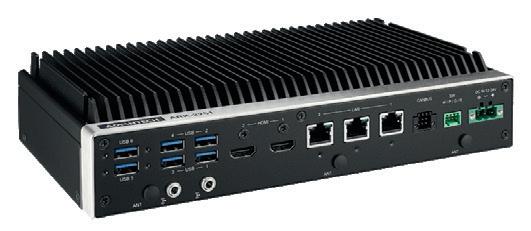


In 1973, the US Air Force was given approval to develop the Navstar GPS and last year, Global Positioning Systems (GPS) turned 30 years old. GPS has now become a ubiquitous component of everyday life all over the world, with countries creating their own GPS systems, such as Russia’s GLONASS, China’s BeiDou Navigation Satellite System and the Galileo system developed by the European Union. Australia and New Zealand recently launched the Southern Positioning Augmentation Network (SouthPAN) system, to help a range of industries gain significant positioning and navigation benefits.
In this issue’s lead article, UNSW academics Professor Andrew Dempster and Dr Craig Roberts share their insights about what people can expect from GPS over the next 50 years. GPS is one of the oldest wireless technologies that works by transmitting information from GPS satellites to a GPS receiver via radio signals and is the basis of many modern wireless technologies. Going forward, the SouthPAN system aims to provide augmented and correct satellite navigation signals directly from the satellite rather than through a mobile phone. This will allow 10-centimetrelevel accuracy to be available everywhere, thereby overcoming gaps in mobile, internet and radio communications.
While wireless technology is one of the key features of this issue, also featured are interesting and informative articles on a range of topics, including wireless communication, quantum computing, the Internet of Things, emergency services telecommunications, and smart and secure storage devices.
I hope you enjoy this informationpacked issue. If you would like to contribute an article or a case study, or have feedback to share, please contact:
WWW.ELECTRONICSONLINE.NET.AU MARCH/APRIL 2024 3
wnie@wfmedia.com.au. Best wishes, Ashna Mehta Editor CONTENTS EDITORIAL COMMENT Your copy of What's New in Electronics is available as an online eMag. READ ONLINE! www.electronicsonline.net.au/magazine 4 The evolution of GPS: what to expect from global navigation satellite systems in the next 50 years 13 Scientists revolutionise wireless communication with 3D processors 14 Portable antenna could help restore communication after disasters 18 A promising leap towards computers with light-speed capabilities 22 New dirt-powered fuel cell can ‘run forever’ 28 Sound-powered sensors stand to save millions of batteries 33 Fast-charging lithium battery seeks to eliminate range anxiety 34 Wearable sticker enables communication through gestures Cover image: iStock.com/blackred
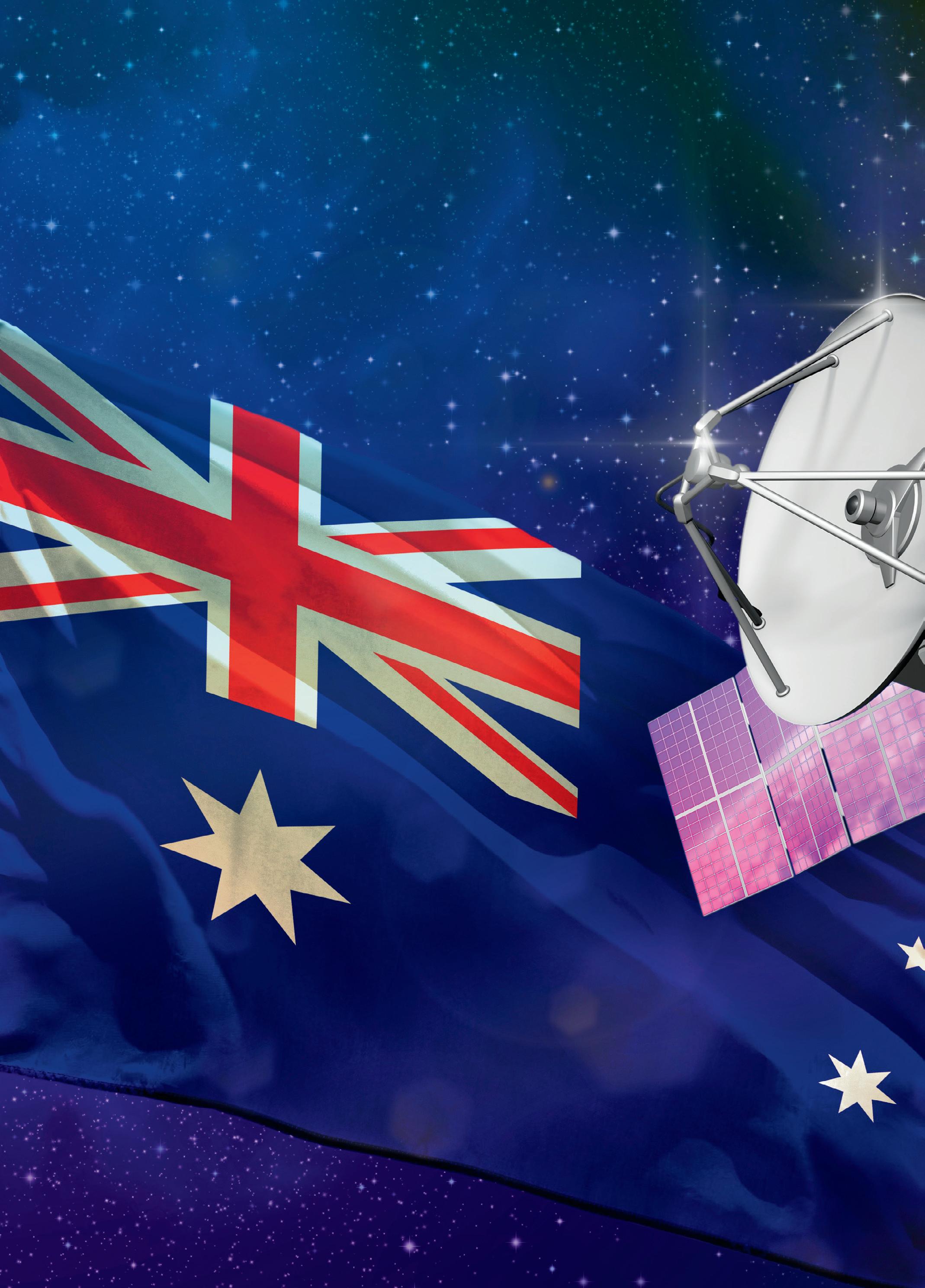
THE EVOLUTION OF GPS
WHAT TO EXPECT FROM GLOBAL NAVIGATION
SATELLITE SYSTEMS IN THE NEXT 50 YEARS
Neil Martin, University of New South Wales
4 MARCH/APRIL 2024 WWW.ELECTRONICSONLINE.NET.AU

More robust and more accurate positioning systems are needed to meet the demands of the global economy — and Australia is set to enjoy the benefits of its very own system.
Global positioning systems turned 50 years old last year with the ‘golden’ anniversary of the US Air Force being given approval in 1973 to develop the Navstar GPS.
GPS has since become a vital component of everyday life that is largely taken for granted by the billions of people who use it for positioning, navigation and timing every single day.
But that increasing reliance also causes greater risks and experts are warning of the dangers if this important technology can be hacked, jammed or even knocked out completely by a natural disaster such as a huge geomagnetic storm.
That’s why developments continue apace in the world of GPS — including Australia and New Zealand’s very own multibillion-dollar positioning system called SouthPAN, which is already active and with more and more services set to be made available in the coming months and years.
Here, UNSW academics Professor Andrew Dempster and Dr Craig Roberts give a sneak peek into what people can expect from GPS over the next 50 years.
SATELLITE SYSTEMS
iStock.com/DancingMan WWW.ELECTRONICSONLINE.NET.AU MARCH/APRIL 2024 5
Australasia gets its own ‘GPS’ system
What most people generally call GPS is actually a specific system owned by the United States government and now operated by the United States Space Force. It was started in 1973.
However, other countries have since developed their own systems and there are currently three major alternatives: Russia’s GLONASS, China’s BeiDou Navigation Satellite System and the Galileo system developed by the European Union. Collectively they are called global navigation satellite systems (GNSS).
India and Japan have also been developing separate systems that are not global. Augmentation systems have been introduced by the US, Europe, Japan and others to overcome some GNSS shortcomings using geostationary satellites (satellites that are always in the same place in the sky).
Australia and New Zealand have now added themselves to the list by joining forces to launch the SouthPAN system — designed to meet global performance requirements under the region’s unique service area and space weather conditions.
“SouthPAN is technically a satellite-based augmentation system, which means it is still relying on receiving signals from other satellite systems but then utilises a number of ground stations to process all the data and then correct some of the errors, making it more accurate. The stated aim is that by 2028 you will be able to use this system via your mobile phone and it will tell you within 10 centimetres exactly where you are,” Dempster, Director of ACSER, said.
In recent times uncorrected GPS signals in Australia have only been accurate to within around three to five metres.
The effect of SouthPAN, therefore, will be that every major industry across Australia and New Zealand, from transport and construction to resources and agriculture, will gain significant positioning and navigation benefits.
How GPS can continue to improve agriculture
You may not know that global navigation satellite systems have become vital in the agricultural industry to reduce costs and improve yields.
GPS is used to plan farming areas, map farms and track the yields of crops from different locations, as well as helping farmers to work in more challenging conditions including even in darkness.

THE GOAL FOR THE FUTURE IS TO KEEP UTILISING THE SYSTEMS, BUT BE LESS VULNERABLE.
So making GPS information even more accurate, available and reliable over the next 50 years will only improve crop production.
“On a basic level it’s good to know exactly where you are when you are a farmer in your combined harvester because you don’t want to be inefficient and waste time or fuel, and also you don’t want to drive over your crop and damage it,” said Roberts, from UNSW’s School of Civil and Environmental Engineering.
“The more automated it is, via an accurate GPS system, the more productive the process as farmers can reduce fatigue.
“In addition, there is a lot of technical agricultural information that can be paired with the GPS data. For example, grain can be analysed to show the exact protein levels, and if you know precisely where that grain was harvested from you get some very useful knowledge.
“And they can do the same for soil moisture and fertiliser usage for each specific location, which over time helps to maximise the yields.”
The need for more robust security
A huge number of technological systems would be affected if global positioning systems were hacked or jammed on a major scale — from airliners to electric grids, from stock markets to ATMs, and any other system that relies on GPS to time its operations.
Such events might be caused deliberately by bad actors in the geopolitical sphere or by a natural phenomenon such as a geomagnetic storm. Many fear a repeat of the Carrington Event of 1859 would knock out every high-level Earth-orbiting satellite in an instant by frying their electronics.
“The problem is that we’re now wedded to GNSS and satellite positioning, but it’s really vulnerable. The goal for the future is to keep
utilising the systems, but be less vulnerable,” Dempster said.
“There have been studies done that show that every single sector of the economy that can be considered critical infrastructure relies on GNSS. So many things need accurate positioning, or accurate timing.
“If you take out a major GPS system then there is an awful lot that can go wrong. But people are becoming more aware of the issue and resilience is becoming a bigger thing.
“There is a lot of work being done on the assumption that at some point a major GPS system will go down.”
One solution is for navigation services to be provided by satellites in low-Earth orbits (LEO). These would sit at around 500–1000 km above the Earth — as opposed to the current satellites which are around 20,000 km high — and would therefore be more protected by the Earth’s own atmosphere should significant geomagnetic activity from space occur.
Another benefit is the signals are 20 times stronger than traditional GPS systems, although the low orbit means that each satellite’s antenna covers a smaller radius of the Earth’s surface and so more of them are required to provide the same coverage.
“When those signals are more robust from satellites in LEO there are a few benefits,” Roberts said.
“Firstly, the signals become harder to jam or spoof and so there is an extra layer of security.
“The second is that emergency services may be able to benefit more from more robust positioning systems. When signals have to travel 20,000 km up and down from Earth, they can be very weak, and that is why GPS does not really work indoors.
“But with new systems with closer satellites and much stronger signals, the potential for accurate GPS inside of buildings increases and there are possible important applications there for those involved with search and rescue.”
6 MARCH/APRIL 2024 WWW.ELECTRONICSONLINE.NET.AU
SATELLITE SYSTEMS
New STM32H5 MCU series
High performance and scalable security

The best combination of performance and security, in an affordable way.
• Industry-first 32-bit MCU with Arm® Cortex®-M33 core running as high as 250 MHz
• A strong, scalable security offer
• From the most essential security building blocks to fully certified services maintained by ST
• The first MCU supplier to offer a certified and maintained TEE solution, the STM32Trust TEE Secure Manager
• PSA and SESIP level 3 certification targets
• Large and robust embedded memory
• up to 2 Mbytes of flash memory in dual bank
• up to 640 Kbytes of SRAM
• Extended connectivity (Ethernet MAC, FD-CAN, MIPI-I3C and USB)
• Temperature range up to 125°C
• Many package options from 25 to 176 pins
STMicroelectronics Suite 703, 247 Coward Street, Mascot, 2020, NSW Australia Tel: +61 2 9158 7201 Email: clifford.shi@st.com Authorized Distributors ARROW Electronics Australia Pty Ltd - Tel +61 2 9737 4900 Future Electronics - Tel: +61 2 8064 0000 Avnet Electronics (Australia) Ltd - Tel: 1300 791 695 www.st.com/stm32h5
ELECTRONEX EXPO RETURNS TO SYDNEY FOR 2024
Following the success of 2023’s Electronex — the Electronics Design and Assembly Expo, the event will return to Sydney in 2024, taking place in the Rosehill Event Centre from 19–20 June. The 2023 event featured more than 80 exhibitors and was attended by over 1900 trade visitors; now, the Sydney event is also close to selling out.
Electronex is Australia’s only major exhibition for companies using electronics in design, assembly, manufacture and service. The SMCBA Electronics Design and Manufacture Conference will also be held alongside Electronex, featuring technical workshops from international and local experts.
Electronex will feature a range of electronic components, surface mount and inspection equipment, test and measurement and other ancillary products and services from local and international suppliers. Attendees will also be able to talk to contract manufacturers that can design and produce turnkey solutions to meet their specific requirements.
Designers, engineers, managers and other design makers who are involved in designing or manufacturing products that utilise electronics are all urged to attend. Many companies will also be launching and demonstrating new products and technology at the event.


Following the success of the inaugural IPC Soldering Competition in Melbourne, this year’s competition will be a round of the IPC World Championship with the winner invited to the finals in November. Further details about the competition will be announced in the lead-up to the event.
The Surface Mount & Circuit Board Association (SMCBA)’s annual conference, dedicated to electronics design and manufacture, will take place in conjunction with Electronex in 2024. The conference will feature a line-up of local and international experts, with David Bergman, Vice President of IPC International, to give the keynote address “Digitalisation of Electronics Manufacturing — Towards Smart Factory enabling Industry 4.0”.
Other presenters at the SMCBA Conference include Mike Creeden, Founder of San Diego PCB Designs; David Hillman from Hillman Electronic Assembly Solutions; Rick Hartley from RHartley Enterprises; and Chris Turner, PSCA Test Engineering SME.
Visitors to the expo can register for free at www.electronex.com.au. For details about the soldering competition and conference visit www.smcba.asn.au.
PHOTONICS-BASED WIRELESS LINK BOOSTS DATA TRANSMISSION
Wireless communication is an essential part of modern life, with researchers across the world working on the next evolution of communication networks, called “beyond 5G” or 6G networks. To enable the near-instantaneous communication needed for applications like augmented reality or the remote control of surgical robots, ultra-high data speeds will be needed on wireless channels. Researchers from Osaka University and IMRA AMERICA have developed a way to increase these data speeds by reducing the noise in the system through lasers.
To pack in large amounts of data while keeping responses fast, the sub-terahertz band, which extends from 100 GHz, will be used by 6G transmitters and receivers. An innovative approach called “multi-level signal modulation” is used to increase the data transmission rate of these wireless links. However, when operating at the top end of these high frequencies, multi-level signal modulation becomes highly sensitive to noise. To work well, it requires precise reference signals, and when those signals begin to shift forward and backward in time (known as “phase noise”), the performance of multi-level signal modulation drops.

The researchers used a stimulated Brillouin scattering laser, which uses interactions between sound and light waves to generate a precise signal. They then set up a 300 GHz-band wireless communication system that uses the laser-based signal generator in the transmitter and receiver. The system also used online digital signal processing (DSP) to demodulate the signals in the receiver and increase the data rate.
Lead researcher Keisuke Maekawa said the problem has limited 300 GHz communications. “However, we found that at high frequencies, a signal generator based on a photonic device had much less phase noise than a conventional electrical signal generator,” Maekawa said.
“Our team achieved a single-channel transmission rate of 240 gigabits per second,” Tadao Nagatsuma, PI of the project, said.
The researchers believe that with multiplexing techniques (where more than one channel can be used) and more sensitive receivers, the data rate can be increased to 1 terabit per second, bringing in a new era of near-instantaneous global communication.
8 MARCH/APRIL 2024 WWW.ELECTRONICSONLINE.NET.AU
iStock.com/NicoElNino

3D-PRINTED, AIR-POWERED MODULES HELP CONTROL SOFT ROBOTS
A team of researchers from the University of Freiburg have developed 3D-printed pneumatic logic modules that can control the movements of soft robots using air pressure. Soft robots could be used to perform tasks that cannot be carried out by conventional robots. These soft robots could be used in terrain that is difficult to access and in environments where they are exposed to chemicals or radiation that would harm robots made of metal. This requires soft robots to be controllable without any electronics, which is a challenge.
The 3D-printed pneumatic logic modules developed by the researchers enable logical switching of the air flow and can thus imitate electrical control. The modules make it possible to produce flexible and electronics-free soft robots entirely in a 3D printer using conventional filament printing material. The researchers, led by Dr Stefan Conrad and Dr Falk Tauber, published their research findings in the journal Science Robotics.

Tauber said the researchers’ design makes it possible for anyone with 3D printing experience to produce such logic modules and use them to control a soft robot without the need for high-end printing equipment. “This marks a significant step towards completely electronics-free pneumatic control circuits that can replace increasingly complex electrical components in soft robots in the future,” Conrad said.
The modules consist of two pressurised chambers, with a 3D-printed channel running between them. By compressing the channel, the expanding chambers can stop the air flow in it and regulate it like a valve. By opening and closing the valve in a targeted manner, the modules can perform the Boolean logic functions “AND”, “OR” and “NOT” in a similar way to electrical circuits and direct the air flow into the movement elements of the soft robot.
The chambers into which air pressure is applied help to determine what function the individual module performs. Depending on the material selected, the modules can be operated with a pressure of between 80 and more than 750 kilopascals. Compared to other pneumatic systems, they have a fast response time of around 100 milliseconds. Tauber said the modules have a range of potential applications.
“We have developed a flexible 3D-printed robotic walker that is controlled by an integrated circuit using air pressure. The flexibility of the logic modules is demonstrated by the fact that this walker can even withstand the load of a car driving over it,” Tauber said.

SOLVENT SIEVING TECHNIQUE EXTENDS LIFESPAN OF PeLEDs
Researchers from the Chinese Academy of Sciences (CAS) have used a simple solvent sieve method to develop efficient and stable perovskite light-emitting diodes (PeLEDs). Perovskites are a promising optoelectronic material due to their excellent optoelectronic performance and low preparation cost. Compared with traditional organic light-emitting diodes (OLEDs), PeLEDs have a narrower light-emitting spectrum and enhanced colour purity, thus showing great potential in display and lighting. However, despite significant progress in efficiency, low operational stability has hindered the practical application of PeLEDs. A limited understanding of the cause of perovskite instability has also limited the development and commercialisation of PeLEDs. Following an indepth analysis of the nanostructures of perovskites, the researchers identified the perovskites’ defective low n-phase as the key source of perovskite instability. The low quality of the low n-phase, which contained one or two layers of lead ions, originated from the rapid and uncontrollable crystallisation process.
Inspired by the process of separating sand of different sizes with a sieve, the researchers used a solvent sieve method to screen out the undesirable low n-phases. The solvent sieve is a combination of polar and nonpolar solvents. The polar solvent acts as a mesh that interacts with perovskites, while the nonpolar solvent acts as a framework that does not affect perovskites. The researchers adjusted the ratio of polar solvents to effectively remove the defective low n-phases.
The PeLEDs based on the sieved perovskites had an operating lifetime of more than 5.7 years under normal conditions (luminance of 100 cd/m2); this lifetime is reportedly the highest value recorded to date for green PeLEDs, reaching the fundamental threshold for commercial application. The PeLEDs also achieved a record high external quantum efficiency (EQE) of 29.5%, thereby improving the efficiency of converting electricity to light. When exposed to ambient air (50±10% humidity), the device can maintain 75% of its film photoluminescence quantum yield and 80% of its EQEE for more than 100 days, thus showing excellent stability.
The solvent sieve method improves the luminescence performance and stability of PeLEDs, but also paves the way for the development and application of perovskites with unique nanostructures and enhanced luminescence performance. The research findings were published in Nature Photonics
10 MARCH/APRIL 2024 WWW.ELECTRONICSONLINE.NET.AU
iStock.com/SimonSkafar
iStock.com/kynny
MICROWAVE PHOTONICS CHIP USES OPTICS FOR ANALOG COMPUTATION
Researchers from City University of Hong Kong (City UHK) have developed a microwave photonic chip that is capable of performing ultra-fast analog electronic signal processing and computation using optics. The chip, which is reportedly 1000 times faster and consumes less energy than a traditional electronic processor, has a range of applications in areas such as 5/6G wireless communication systems, high-resolution radar systems, artificial intelligence, computer vision and image/video processing.
The research findings have been published in the scientific journal Nature The expansion of wireless networks, the Internet of Things and cloud-based services has placed significant demands on underlying radio frequency systems. Microwave photonics (MWP) technology, which uses optical components for microwave signal generation, transmission and manipulation, offers solutions to these challenges. However, integrated MWP systems struggle to achieve ultrahigh speed analog signal processing with chip-scale integration, high fidelity and low power simultaneously.
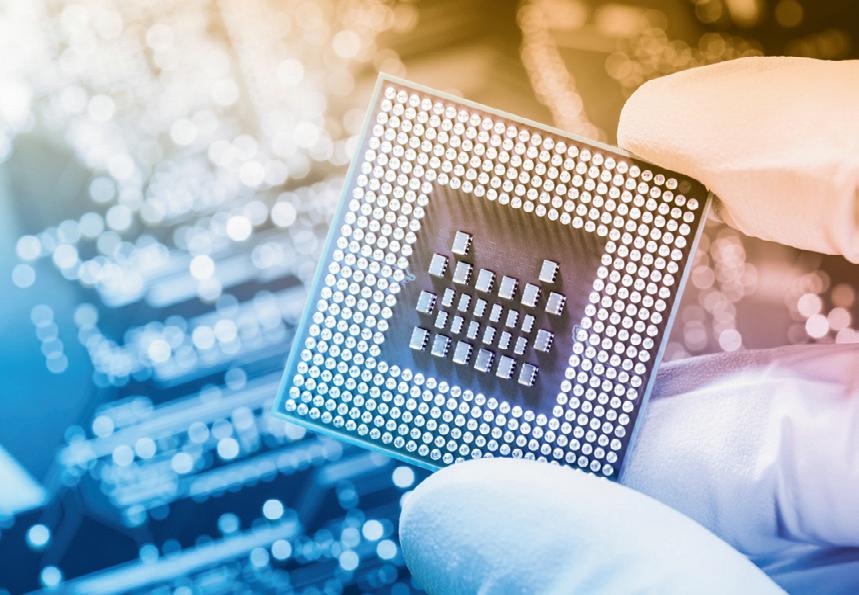
Professor Wang Cheng from CityUHK said the researchers developed an MWP system that combines ultrafast electro-optic (EO) conversion with low-loss, multifunctional signal processing on a single integrated chip. This was achieved by using an integrated MWP processing engine based on a thin-film lithium niobate (LN) platform capable of performing multi-purpose processing and computation tasks of analog signals.
The team has been researching the integrated LN photonic platform for years; in 2018, the researchers developed a CMOS (complementary metal-oxide semiconductor)-compatible integrated electro-optic modulator on the LN platform, which laid the foundation for the current research. LN is referred to as the “silicon of photonics” for its importance to photonics comparable to silicon in microelectronics.
Feng Hanke, first author of the paper, said the chip can perform high-speed analog computation with ultrabroad processing bandwidths of 67 GHz and enhanced computation accuracies. This research opens up a new research field (LN microwave photonics) that could facilitate the development of microwave photonics chips with compact sizes, high signal fidelity and low latency.

ELECTRONIC ENCLOSURES
Bernic has launched the ERNI/TE Connectivity range of LDG-A and LDG-S electronic enclosures. Crafted from polycarbonate (PC) with a light grey finish, the enclosures offer a range of features to meet the requirements of modern industries. The range of enclosures features steel tin-plated screw clamp terminals for enhanced safety and a snap design to facilitate quick assembly. The enclosures also come with options for wall or DIN-rail mounting, and can accommodate different numbers of screw clamp terminals. Users can choose from 12, 14, 16, 30 or even 46 screw clamp terminals.

The LDG-A Series of fully insulated enclosures is suitable for PCB board protection, with screw clamp terminals to meet safety standards. The LDG-A series comes in sizes from LDG-A-12 to LDG-A-70, with a snap design for industrial and signalling applications.
The LDG-S Series of enclosures is designed for the machinery and automotive sectors, featuring DIN-rail mounting (LDG-S2 22.5 mm and LDG-S4 45 mm widths) for efficient installation. Users can also choose between screw terminal blocks or PCB headers for flexible termination. The LDG-S Series of enclosures also comes with integrated ventilation slots for efficient heat dissipation.
The Bernic LDG enclosures offer a secure housing solution for a range of electronic devices.
ERNTEC Pty Ltd
www.erntec.net

GNSS/INS NAVIGATION SENSOR
Metromatics now offers the MicroStrain by HBK 3DM-GQ7-GNSS/INS. This sensor is designed to provide accurate positioning and orientation, making it suitable for guiding drones and unmanned vehicles or even navigating autonomous robots.
The sensor features two multi-band GNSS receivers, alongside a tactical-grade IMU, to help enable projects to stay on track during harsh conditions ranging from dense urban environments to remote, uncharted territories. The sensor also features RTK support and an adaptive Kalman filter. With the addition of Microstrain’s mobileenabled 3DM-RTK Modem and the SensorCloud RTK Network, users can enhance the sensor’s navigation capabilities for greater accuracy, tracking and performance.
The sensor is also designed to be compact and efficient across a variety of settings. Plus, with features like 1.5°/h gyro bias instability, dual antenna GNSS heading, adjustable sampling rates up to 1 kHz and a lightweight design, it’s engineered to support a range of projects.
Metromatics Pty Ltd www.metromatics.com.au
ALUMINIUM ENCLOSURES
METCASE has launched the TECHNOMET-CONTROL aluminium enclosures for electronic control systems, panel PCs and HMI electronics. They are designed for mounting on standard VESA brackets/arms, walls, machines and round poles. The enclosures are suitable for indoor applications such as industrial machine control, factory processing, security systems, test and measurement, point of sale, IIoT and detection equipment. The enclosures are suitable specifically for Siemens TP displays (sizes KTP400 to TP1200) but can also house touchscreens and displays by other manufacturers, including Beckhoff and B&R.
The enclosures feature a cohesive design, with diecast front and rear bezels that fit flush with the main case body. Snap-on trims hide all the assembly screws. The enclosures are easy to customise in any size, with plenty of space for connectors. The front panel is recessed in the bezel to protect displays and membrane keypads. At the rear VESA MIS-D 100 mounting points are provided for fitting an off-the-shelf VESA control arm or wall bracket. The base panel on the underside is removable with space for cable entry.
Inside, the assembly extrusions have M3 holes and guide rails to hold internal plates, and the rear panel has M3 PCB pillars. All the case panels are fitted with M4 threaded pillars for earth connections. Some studs can also be used with retaining straps to secure the front and rear panels during maintenance.
TECHNOMET-CONTROL is available as standard in four sizes from 230 x 180 mm to 420 x 300 mm, with a slim profile that is 95 mm deep. The standard colour is traffic grey A (RAL 7042) or combination traffic grey A/traffic white (RAL 7042/9016).
Custom colours are also available on request. Accessories include front panels, internal mounting plates, wall mounting kits and a pole mounting bracket (for poles 50 mm or larger).
METCASE can supply TECHNOMET-CONTROL fully customised. Services include bespoke sizes, CNC machining, custom front panels, fixings and inserts, photo-quality digital printing and painting/finishing.
ROLEC OKW Australia New Zealand P/L www.metcase.com.au

12 MARCH/APRIL 2024 WWW.ELECTRONICSONLINE.NET.AU
SCIENTISTS REVOLUTIONISE
WIRELESS COMMUNICATION WITH 3D PROCESSORS
Karen Dooley, University of Florida

Scientists at the University of Florida have pioneered a method for using semiconductor technology to manufacture processors that significantly enhance the efficiency of transmitting vast amounts of data across the globe.
The innovation is poised to transform the landscape of wireless communication at a time when advances in AI are dramatically increasing demand.
Traditionally, wireless communication has relied on planar processors, which, while effective, are limited by their twodimensional structure to operate within a limited portion of electromagnetic spectrum. The UF-designed approach leverages the power of semiconductor technology to propel wireless communication into a new dimension — quite literally.
Researchers have successfully transitioned from planar to three-dimensional processors, ushering in a new era of compactness and efficiency in data transmission.
Roozbeh Tabrizian, PhD, an associate professor in UF’s Department of Electrical and Computer Engineering, whose team developed the three-dimensional processor, said it marks a pivotal moment in the evolution of wireless communication as the world becomes increasingly reliant on seamless connectivity and real-time data exchange.
“The ability to transmit data more efficiently and reliably will open doors to new possibilities, fuelling advancements in areas such as smart cities, remote health care and augmented reality,” he said.
Currently, data in our cellphones and tablets are converted into electromagnetic waves that propagate back and forth among billions of users. Much like highway design and traffic lights ensure traffic flows efficiently through a city, filters, or spectral processors, move the data across different frequencies.
“A city’s infrastructure can only handle a certain level of traffic, and if you keep increasing the volume of cars, you have a problem,” Tabrizian said. “We’re starting to reach the maximum amount of data we can move efficiently. The planar structure of processors is no longer practical as they limit us to a very limited span of frequencies.”
With the advent of AI and autonomous devices, the increased demand will require a lot more traffic lights in the form of filters at numerous different frequencies to move the data to where it is intended.
“Think of it like lights on the road and in the air,” Tabrizian said. “It becomes a mess. One chip manufactured for just one frequency doesn’t make sense anymore.”
Tabrizian and his colleagues at the Herbert Wertheim College of Engineering use CMOS technology, or complementary metal-oxidesemiconductor fabrication process, to build the three-dimensional nanomechanical resonator.
“By harnessing the strengths of semiconductor technologies in integration, routing and packaging, we can integrate different frequency-dependent processors on the same chip,” Tabrizian said. “That’s a huge benefit.”
The three-dimensional processors occupy less physical space while delivering enhanced performance and have indefinite scalability, meaning they can accommodate growing demands.
“This entirely new type of spectral processor, which integrates different frequencies on one monolithic chip, is truly a game changer,” said David Arnold, associate chair for faculty affairs in the Department of Electrical and Computer Engineering.
“Dr Tabrizian’s new approach for multi-band, frequency-agile radio chipsets not only solves a huge manufacturing challenge, but it also allows designers to imagine entirely new communication strategies in an increasingly congested wireless world. Put more simply, our wireless devices will work better, faster and more securely.”
The team of researchers, which included Tabrizian, Faysal Hakim, Nicholas Rudawski and Troy Tharpe, began work on this new approach to the processor in 2019. They received funding from the Defense Advanced Research Projects Agency, a U.S. Department of Defense agency that invests in breakthrough technologies for national security.
WWW.ELECTRONICSONLINE.NET.AU MARCH/APRIL 2024 13
iStock.com/Ignatiev DATA TRANSMISSION
PORTABLE ANTENNA COULD HELP RESTORE COMMUNICATION AFTER DISASTERS
Laura Castañón, Stanford University

When an earthquake, flood or other disaster strikes a region, existing communication infrastructure such as cell phone and radio towers are often damaged or destroyed. Restoring emergency communications as quickly as possible is vital for coordinating rescue and relief efforts.
Researchers at Stanford University and the American University of Beirut (AUB) have developed a portable antenna that could be quickly deployed in disaster-prone areas or used to set up communications in underdeveloped regions. The antenna, described recently in Nature Communications, packs down to a small size and can easily shift between two configurations to communicate either with satellites or devices on the ground without using additional power.
“The state-of-the-art solutions typically employed in these areas are heavy, metallic dishes. They’re not easy to move around, they require a lot of power to operate and they’re not particularly cost-effective,” said Maria Sakovsky, an assistant professor of aeronautics and astronautics at Stanford. “Our antenna is lightweight, low-power and can switch between two operating states. It’s able to do more with as little as possible in these areas where communications are lacking.”

Two functions in one antenna
The researchers developed the antenna with an approach typically used to design devices that are being deployed in space. Because of fuel and space limitations, technology being sent into orbit must be very lightweight and packaged as small as possible. Once the items are in orbit, they unfold into the proper shape for use. The researchers wanted their antenna to be similarly collapsible and lightweight.
The antenna designed by Sakovsky and her colleagues at AUB, including Joseph Costantine, Youssef Tawk and Rosette Maria Bichara, is made of fibre composites (a material often used in satellites) and resembles a child’s
finger-trap toy, with multiple strips of material crossing in spirals. Just like any helix-based antenna, conductive material running through the antenna sends out signals, but thanks to its unique structure, the researchers can adjust the pattern and power of those signals in the new antenna by pulling it into longer shapes or shorter shapes.
“Because we wanted the antenna to be able to collapse into a packable shape, we started with this structure that led us to a very untraditional antenna design,” Sakovsky said. “We’re using shapes that have never been used on helical antennas before, and we’ve shown that they work.”
14 MARCH/APRIL 2024 WWW.ELECTRONICSONLINE.NET.AU
iStock.com/Yosuke Tanaka
Assistant Professor Maria Sakovsky co-designed a portable antenna that can communicate with satellites and devices on the ground, making it easier to coordinate rescue and relief efforts in disaster-prone areas.
Andrew Brodhead, Stanford University.


At its most compact, the antenna is a hollow ring that stands just over 1 inch tall and about 5 inches across — not much larger than a bracelet — and weighs 1.4 ounces. In this shape, it’s able to reach satellites with a high-power signal sent in a particular direction. When stretched out to about a foot tall, the antenna sends a lower power signal in all directions, more like a Wi-Fi router.
Shifting between these two states is as simple as pulling or pushing on the antenna. These movements don’t even need to be particularly precise, because once
The bi-stable deployable quadrifilar helix antenna passively reconfigures its radiation characteristics in terms of pattern and polarisation.
Reconfigurable & Active Structures Lab, Stanford University.
the antenna is moved past a certain point, the structure snaps to the right position. The specific size and shape of the antenna design will determine which frequencies those two states communicate across.
“The frequency you want to operate at will dictate how large the antenna needs to be, but we’ve been able to show that no matter what frequency you operate at, you can scale this design principle to achieve the same performance,” Sakovsky said.
The fabricated prototype was tested for deployment and structural performance at Stanford
and its electromagnetic radiation characteristics at the antenna measurement facilities at AUB.
Applications in orbit
To be deployed in the field, the antenna would need to be paired with a transceiver to send and receive signals, a ground plane to reflect radio waves and other electronics, but the whole package would still only weigh about 2 pounds, Sakovsky said. And the antenna’s unique dual functionality means that it could replace multiple heavier antennas in areas where deployment is a challenge.
That includes uses in disaster-struck and underdeveloped areas, but also, potentially, in space. Sakovsky and her colleagues are considering adapting their design for satellite communications, allowing satellites to use the same antenna to talk to each other and to talk to the ground.
“We don’t have a lot of spare operating power, volume or mass on our spacecraft either,” Sakovsky said. “This holds a lot of potential for replacing multiple antennas on a satellite with a single one.”

WWW.ELECTRONICSONLINE.NET.AU MARCH/APRIL 2024 15
EMERGENCY COMMUNICATIONS
MIXED SIGNAL OSCILLOSCOPE
The Digilent Analog Discovery Pro (ADP2230) is a small, portable, mixed signal oscilloscope (MSO) designed for professional engineers. It features two analog inputs (50+ MHz bandwidth), one analog output (15 MHz bandwidth) and digital I/O, with deep memory buffers all operating at up to 125 MSa/s. Users can both receive and generate digital signals to test and analyse data from various devices while simultaneously powering those systems with the device’s power supply. The design allows the MSO to perform the functions of several test and measurement devices, to replace a number of traditional instruments.
With Free WaveForms’ user interface software, users can view and capture complex data, perform spectral and network analysis, and retrieve large amounts of data. WaveForms leverages the ADP2230’s deep buffer memory, allowing hundreds of millions of samples to be stored and streamed back to the host computer.
The ADP2230 is part of the Digilent family of test and measurement devices that enable engineers, researchers, educators and scientists to design and test with flexibility. These customisable solutions cater to both professionals and emerging engineers, accelerating development while maintaining a low barrier to entry.
The ADP2230 features BNC connectors and an aluminium case. The device comes with 16 digital input/output channels and two power supply outputs. It can achieve USB 3.0 communication speeds and sync multiple devices for increased channel count. Extensive software support is also offeredthrough WaveForms, WaveForms SDK, LabVIEW, and MATLAB.
Digilent Inc
www.digilent.com

EDGE AI COMPUTER
Backplane Systems Technology has launched the Neousys NRU-154PoE-FT, an advanced NVIDIA Jetson Orin NX Edge AI Computer, designed for high-demand applications requiring AI inference capabilities. The edge AI computer delivers up to 100 TOPS AI inference performance, making it suitable for a range of industrial and environmental conditions. It is equipped with a flattop heatsink design, optimised for fanless operation within sealed enclosures, thereby enabling performance in temperatures ranging from -25 to 60°C without thermal throttling, even at a 20 W TDP.
Designed for efficiency, the edge AI computer features 4x 2.5GbE PoE+ ports, enabling direct connectivity to IP and industrial GigE cameras, while its sibling, the NRU-156U3-FT, features 6x USB 3.2 ports for industrial USB3 camera connections. These full-bandwidth ports are designed to facilitate data transmission, crucial for applications in edge inspection, AI-based factory automation and environmental monitoring.
The NRU-150-FT series, powered by the NVIDIA Jetson Orin NX and bundled with JetPack 5.1, aims to push the boundaries of edge computing. Its comprehensive suite of ports, including 1x RS-232, 1x isolated RS-485 and an M.2 2242 M key NVMe slot, enhances its utility in scenarios such as metal processing, food processing, smart agriculture and roadside applications.
This edge AI computer’s design prioritises performance and durability to help operations remain uninterrupted in environments laden with dust, metal particles or fluids.
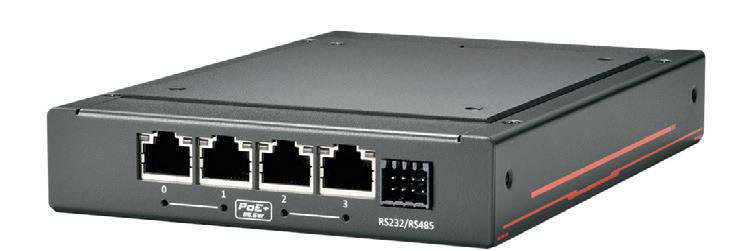
Backplane Systems Technology Pty Ltd
www.backplane.com.au
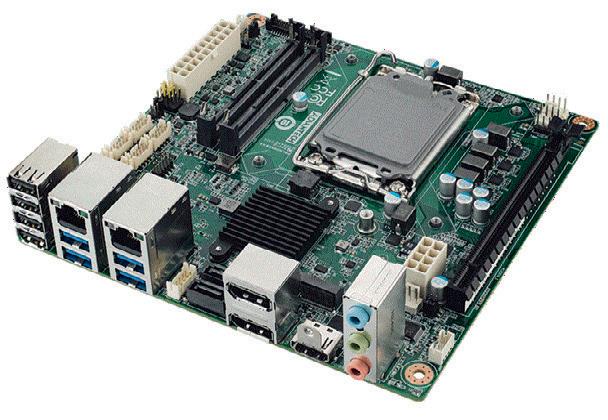
MINI-ITX BOARD
Advantech has launched the AIMB-208, a high-performance Mini-ITX board designed for functionality and efficiency. Equipped with an array of I/O ports, including 6 COM and 10 USB, the board is designed to facilitate data transmission among devices and systems, making it suitable for applications like factory automation, in vitro diagnostics and self-service kiosks. Its 9x enhanced computational performance, supporting 6th to 13th Gen Intel Core desktop processors (max. 24 Core) is also designed to enhance processing efficiency.
The board features 6 COM ports, catering to legacy devices and facilitating long-distance data transmission in large-scale industrial automation. With 10 USB ports, it enables real-time data transfer and multitasking responsiveness, enhancing inter-device connectivity for versatile automation applications.
Featuring integrated graphics performance (iGPU), the AIMB-208 eliminates the need for an external graphics card, making PCIe slots available for additional LAN ports via adapter cards. This is beneficial in machine vision applications, allowing efficient processing of data from high-speed cameras at the edge, enhancing inference accuracy and quality.
The board includes DeviceOn to enable real-time remote monitoring and management of thousands of devices. This feature identifies and resolves potential issues promptly, minimising downtime for efficient 24/7 operation management.
Advantech also provides custom BIOS, OS, Windows and Ubuntu, expediting customer development while helping systems stay up to date with the latest firmware and security patches. The AIMB-208 stands as a comprehensive solution, offering I/O, powerful processing capabilities and management software for optimised system efficiency and security in automation and industrial control applications.
Advantech Australia Pty Ltd www.advantech.net.au
16 MARCH/APRIL 2024 WWW.ELECTRONICSONLINE.NET.AU
RMIT RESEARCH SHOWS CONNECTION
BETWEEN INTERNET ACCESS & STOCKMARKET STABILITY
Josh Young

What are the ramifications for the stockmarket when you turn off the Internet? According to the latest research, published in the Journal of Financial Economics, limiting access to research can impact investors' decision-making — increasing the risk of a stock market crash.
An RMIT study into the 2010 withdrawal of Google from mainland China examined the impact of the search engine’s exit and the subsequent impact on investment markets. For those who are looking to study at RMIT, such as completing an MBA online in Australia, this study is an example of how research can take you to some truly fascinating places.
Challenging Assumptions
The RMIT study results challenged past assumptions of the influence of search engines and their behavioural impact on investors.
Dr Gaoping Zheng, lead researcher, highlighted that the findings of this study challenged previous thinking that results simply justified the existing ideas of investors, noting that search functions more as a facilitator for decision-making, rather than solely as a validation tool.
“Until now it’s been widely thought that unrestrictive internet searches result in bias and an overvaluation of stocks but that would mean restricting search would decrease stock market crash risk. Instead, we saw a significant jump,” Zheng said. “This suggests internet searching does not exacerbate investors’ biases instead, it facilitates their ability to access and analyse information.”
Studying
a Search Engine Withdrawal
China’s stock market is one of the largest in the world — and with nearly a quarter of a billion individual investors, it presents a unique opportunity for a study in a near-natural replication of other markets.
The research, undertaken by Dr Zheng’s team, was rather novel in its approach. By dividing a list of Chinese firms into two groups — one, which had a high search volume on Google
before their 2010 withdrawal, and a second group, which were not regularly searched for on the platform.
Measuring the impact on the average stock price risk before and after Google’s withdrawal, the team was able to identify that the group of stocks that were regularly searched on Google were 19% more unstable than the group of lesser searched firms.
The research delved into the role of search engines such as Google in providing a search result that is less likely to be constrained by political constraints, unlike state-owned platforms which are restricted under severe domestic censorship regulation.
Commenting on the research, Zheng noted that these restrictive search conditions result in investors being less informed, and are more likely to fall prey to deceptive conduct and other biases. “If managers withhold negative news, investors are less likely to mitigate their misconceptions and biases surrounding a certain stock,” she said, highlighting how transparency and corporate accountability can be crucial in keeping companies honest to potential shareholders.
An Australian Perspective
The research provides helpful insights into the potential impact on markets if search engines such as Google choose to exit the Australian market. While many nations have many more accessible search engines, Google still holds a dominant market share in web search traffic in Australia, so it’s reasonable to consider what the impacts may be if they were to leave the Australian market.
In a world that is increasingly digital, interconnected, and challenging, the research undertaken by Dr Zheng’s team highlights how access to unbiased information is critical in mitigating the risks of volatile stock markets.

WWW.ELECTRONICSONLINE.NET.AU MARCH/APRIL 2024 17 SPONSORED CONTENT
University www.rmit.edu.au
RMIT
iStock.com/Andrii Fomenko
A PROMISING LEAP TOWARDS COMPUTERS WITH LIGHT-SPEED CAPABILITIES
Will Wright and Shu Shu Zheng, RMIT University

Scientists have created a reprogrammable light-based processor that they say could usher in a new era of quantum computing and communication.
Technologies in these emerging fields that operate at the atomic level are already realising big benefits for drug discovery and other small-scale applications.
In the future, large-scale quantum computers promise to be able to solve complex problems that would be impossible for today’s computers.
Lead researcher Professor Alberto Peruzzo from RMIT University in Australia said the team’s processor — a photonics device that used light particles to carry information — could help enable successf ul quantum computations, by minimising ‘light losses’.
“Our design makes the quantum photonic quantum computer more efficient in terms of light losses, which is critical for being able to keep the computation going,” said Peruzzo, who heads the ARC Centre of Excellence for

Quantum Computation and Communication Technology (CQC2T) node at RMIT.
“If you lose light, you have to restart the computation.”
Other potential advances included improved data transmission capabilities for ‘unhackable’ communications systems and enhanced sens-
ing applications in environmental monitoring and health care, Peruzzo said.
What did the team achieve?
The team reprogrammed a photonics processor in a range of experiments, achieving a performance equivalent to 2500 devices, by applying
18 MARCH/APRIL 2024 WWW.ELECTRONICSONLINE.NET.AU
Professor Mirko Lobino from the University of Trento in Italy.
Daniel Peace

varying voltages. Their results and analysis are published in Nature Communications
“This innovation could lead to a more compact and scalable platform for quantum photonic processors,” Peruzzo said.
Yang Yang, lead author and RMIT PhD scholar, said the device was “fully controllable”, enabled fast reprogramming with reduced power consumption and replaced the need for making many tailored devices.
“We experimentally demonstrated different physical dynamics on a single device,” he said.
“It’s like having a switch to control how particles behave, which is useful for both understanding the quantum world and creating new quantum technologies.”
Professor Mirko Lobino from the University of Trento in Italy made the innovative photonic device, using a crystal called lithium niobate, and Professor Yogesh Joglekar from Indiana University Purdue University Indianapolis in the United States brought his expertise in condensed matter physics.
Lithium niobate has unique optical and electro-optic properties, making it ideal for various applications in optics and photonics.
“My group was involved in the fabrication of the device, which was particularly challenging because we had to miniaturise a large number of

electrodes on top of the waveguides to achieve this level of reconfigurability,” Lobino said.
“Programmable photonic processors offer a new route to explore a range of phenomena in these devices that will potentially unlock incredible advancements in technology and science,” Joglekar said.
Another quantum leap?
Meanwhile, Peruzzo’s team has also developed a world-first hybrid system that combines machine learning with modelling to program photonic processors and help control the quantum devices.
Peruzzo said the control of a quantum computer was crucial to ensure the accuracy and efficiency of data processing.
“One of the biggest challenges to the device’s output accuracy is noise, which describes the interference in the quantum environment that impacts how qubits perform,” he said.
Qubits are the basic units of quantum computing.
“There are a whole range of industries that are developing full-scale quantum computing, but they are still fighting against the errors and inefficiencies caused by noise,” Peruzzo said.
Attempts to control qubits typically relied on assumptions about what noise was and what caused it, Peruzzo said.
“Rather than make assumptions, we developed a protocol that uses machine learning to study the noise while also using modelling to predict what the system does in response to the noise,” he said.
With the use of the quantum photonic processors, Peruzzo said this hybrid method could help quantum computers perform more precisely and efficiently, impacting how we control quantum devices in the future.
“We believe our new hybrid method has the potential to become the mainstream
control approach in quantum computing,” Peruzzo said.
Lead author Dr Akram Youssry, from RMIT, said the results of the newly developed approach showed significant improvement over the traditional methods of modelling and control, and could be applied to other quantum devices beyond photonic processors.
“The method helped us uncover and understand aspects of our devices that are beyond the known physical models of this technology,” he said.
“This will help us design even better devices in the future.”
This work is published in Npj Quantum Information
Next steps
Peruzzo said startup companies in quantum computing could be created around his team’s photonic device design and quantum control method, which they would continue to study in terms of applications and their “full potential”.
“Quantum photonics is one of the most promising quantum industries, because the photonics industry and manufacturing infrastructure are very well established,” he said.
“Quantum machine-learning algorithms have potential advantages over other methods in certain tasks, especially when dealing with large datasets.
“Imagine a world where computers work millions of times faster than they do today, where we can send information securely without any fear of it being intercepted and where we can solve problems in seconds that would currently take years.
“This isn’t just fantasy – it’s the potential future powered by quantum technologies, and research like ours is paving the way.”
WWW.ELECTRONICSONLINE.NET.AU MARCH/APRIL 2024 19
QUANTUM COMPUTING
The team’s reprogrammable light-based processor.
iStock.com/Oakkharaphon Prasanya
Will Wright, RMIT University.
RUGGED PC
ICP Electronics Australia has launched the iEi TANK-XM811, a fanless embedded PC featuring Intel’s 13th/12th Generation Core processors in a robust platform designed for edge AI applications. This system supports a trio of CPUs: the i5-12500TE, i7-12700TE and the i9-12900TE, each offering a balance of performance and power efficiency with up to 4.8 GHz turbo frequencies and 16 cores on the flagship model.
Equipped with dual 2.5GbE ports for high-speed networking, numerous USB and serial ports for peripheral connectivity and multiple internal expansion options, the PC is designed to provide flexibility and scalability. Users can further customise their set-up with various optional backplanes and chassis, tailoring the system to meet specific industrial IoT requirements such as surveillance, transportation and advanced manufacturing.

The device is supported by its enhanced GPU and NVMe storage capabilities. Its eChassis modules offer scalability, allowing for easy integration of additional GPUs or accelerators to boost AI inference performance. Furthermore, this system also features a fanless cooling design that enables operation in extreme temperatures and conditions, making it suitable for deployment in challenging environments.
The device is also certified for CE and FCC compliance, for safety in industrial settings. Its emphasis on modular design also reduces lead times, providing a configurable solution for modern edge computing challenges.
ICP Electronics Australia Pty Ltd www.icp-australia.com.au
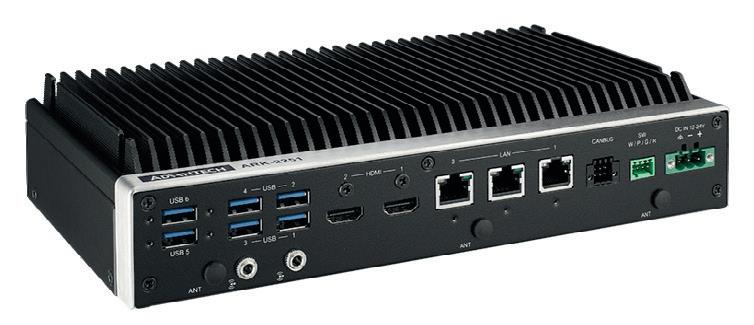
FANLESS EDGE COMPUTER
Advantech has launched the ARK-2251, a fanless edge computer powered by 13th Gen Intel Core i3/i5/i7 processors, designed for industrial applications. With 19+ I/O connections and support for 10+ iDoor modules, the fanless edge computer offers a range of connectivity options to facilitate integration with various sensors and devices. Its slim profile, standing at 2.13 ″, makes it suitable for diverse applications such as conveyor systems and autonomous mobile robots (AMRs).
The ARK-2251 employs a performance hybrid architecture to enable efficient operation even in constrained spaces with its fanless design and wide operating temperature range. It also features an optional PoE module for easy power delivery to devices like IP cameras and access points.
For enhanced connectivity, the fanless edge computer supports wireless connections with Wi-Fi 6 and 5G modules via an M.2 slot, bolstering security and remote management capabilities through optional TPM 2.0 modules and DeviceOn software. Additionally, it provides Mini-PCIe and M.2 interfaces for flexible deployment on a network, thereby facilitating wireless connectivity for processing and storing data generated from cameras and sensors at the edge.
With two 2.5GbE LAN ports and support for AMO-IO29 TPM 2.0 modules, the fanless edge computer prioritises security and data processing efficiency for edge and AIoT applications. The integrated DeviceOn platform manages various devices like sensors and GPS, allowing for remote management of power, system monitoring, troubleshooting and AIoT device upgrades.
Advantech’s ARK-2251 edge computer is available now. Advantech Australia Pty Ltd www.advantech.net.au
VECTOR GRAPHICS ACCELERATOR
STMicroelectronics has launched the NeoChromVG GPU, a vector graphics accelerator for general-purpose microcontrollers. NeoChromVG GPU is a traditional NeoChrom GPU with a hardware unit designed to accelerate vector graphics computations, such as quadratic Bézier curves, which are very common in vector fonts, Bézier tessellation to render surfaces and vector calculations for vertex transformation, among other things, to rapidly draw vector graphics on screen.
The device relies on the same texture mapper as the regular NeoChrom GPU and has similar features like L8 compression. Vector graphic acceleration simply becomes an additional tool in a developer’s arsenal to enhance their UI. The feature also comes on the heels of TouchGFX 4.23, which has gained support for vector fonts.
The GPU will be available on the new STM32U5G9 and STM32U5F9, the former being the version housing a crypto core. Both will feature 3 MB of RAM and 4 MB of dual-bank flash. This hardware configuration enables customers to move to a single-chip design that didn’t require external memory at all, while the increase in internal memory and vector graphics support helped others use smaller NAND devices. In both cases, it helps simplify the PCB design to move to only four layers and lower the bill of materials.
STMicroelectronics is releasing the STM32U5G9J-DK, with a 480 x 480 display, and the STM32U5G9J-DK2, with an 800 x 480 screen, as well as a UI demo showing what developers can accomplish with vector graphics.
STMicroelectronics Pty Ltd www.st.com


20 MARCH/APRIL 2024 WWW.ELECTRONICSONLINE.NET.AU

AUSTRALIAN EDTECH SECTOR GENERATES 2.9 BILLION IN REVENUE
Ben Crowle
Educational Technology (EdTech) may not only be one of the nation’s best ways of ensuring that future generations have access to a stellar education — but also a lucrative and secure career path. A recent report by EdTech acceleration company, EduGrowth, found that the EdTech sector turns in a revenue of around 2.9 Billion dollars.
With many of the recent advancements in EdTech being focused on connectivity and AI integration, this is an exciting time for many career paths. An online MBA, for example, would give you the tuition relevant to becoming a Pathway Manager, Project Manager, or Human Resource Development; all of which are essential jobs in the educational technology sector. The excellent thing is that this is one of only a myriad of educational opportunities that can land you a career in this industry.
Considering the current state and projected growth of educational technology in our schools, the apparent lucrativeness, security, and demand for EdTech professionals will climb in the coming years. A report by Campion, a company that specialises in the supply of print and digital education resources, found that half of Australian Schools are using dual-learning methods. Simply put, that means 50% of all schools are using both print and digital media to teach their students. The report also showed that a third of schools are hoping to expand the role that up-to-date technology plays in their educational endeavours.
As schools attempt to increase their technological teaching and learning capabilities, demand for professionals in the industry will increase exponentially. Considering the EdTech industry’s previous trends in growth, there doesn’t seem to be any reason why we shouldn’t expect the sector to grow just as much, if not more, than in previous years.
Australia has a reputation for offering good educational standards. In 2023, global rankings put Australia in tenth place for education. Against the entire world that’s quite a feat. Despite recent criticisms thrown at our national curriculum, the consistent and aggressive growth of the educational technology industry sector is emblematic of a nation that considers the education of its citizens a high priority. With technological innovation and implementation like this, curriculum reform may not be too far behind.
Indeed, in 2022, the curriculum did undergo some changes, with topics such as consent and ethics in personal relationships, as well as a deeper understanding of First Nations people’s history and culture, earlier and deeper global history tuition, a deeper focus on English phonics, and more, the curriculum reform isn’t something Australia is hesitant about.
All in all, the EdTech sector, according to previous trends and the EduGrowth annual industry growth report, there is a lot to look forward to right now if your career path is sending you to the land of digitised textbooks and online exams. Educational Technology is an exciting industry sector to be involved in at the moment and as an industry with such astronomical revenue growth, not only is there no shortage of opportunity, but it’s lucrative as well.


WWW.ELECTRONICSONLINE.NET.AU MARCH/APRIL 2024 21 SPONSORED CONTENT Melbourne Business School online.mbs.edu/degree-programs/mba-online
iStock.com/Daniel de la Hoz
NEW DIRT-POWERED FUEL CELL CAN ‘RUN FOREVER’

A team of researchers from Northwestern University has developed a new fuel cell that harvests energy from microbes living in dirt.
Approximately the size of a standard paperback book, the fully soilpowered technology could fuel underground sensors used in precision agriculture and green infrastructure. This could offer a sustainable, renewable alternative to batteries, which hold toxic, flammable chemicals that leach into the ground and contribute to electronic waste.
To test the new fuel cell, the researchers used it to power sensors measuring soil moisture and detecting touch. To enable wireless communications, the researchers equipped the soil-powered sensor with a tiny antenna to transmit data to a neighbouring base station by reflecting existing radio frequency signals. Not only did the fuel cell work in wet and dry conditions, its power also outlasted similar technologies by 120%.
The research was published in the Proceedings of the Association for Computing Machinery on Interactive, Mobile, Wearable and Ubiquitous Technologies. The study authors will also release all designs, tutorials and simulation tools to the public, so others may use and build upon the research. Lead researcher and Northwestern alumnus Bill Yen said the number of devices in the Internet of Things (IoT) is constantly growing.
“If we imagine a future with trillions of these devices, we cannot build every one of them out of lithium, heavy metals and toxins that are dangerous to the environment. We need to find alternatives that can provide low amounts of energy to power a decentralised network of devices. In a search for solutions, we looked to soil microbial fuel cells, which use special microbes to break down soil and use that low amount of energy to power sen-
sors. As long as there is organic carbon in the soil for the microbes to break down, the fuel cell can potentially last forever,” Yen said.
George Wells, a senior author on the study, said the microbes are ubiquitous, as they live in soil everywhere. “We can use very simple engineered systems to capture their electricity. We’re not going to power entire cities with this energy. But we can capture minute amounts of energy to fuel practical, low-power applications,” Wells said.
In recent years, precision agriculture has been adopted worldwide as a strategy to improve crop yields. This tech-driven approach relies on measuring precise levels of moisture, nutrients and contaminants in soil to make decisions that enhance crop health. This requires a widespread network of electronic devices to continuously collect environmental data.
“If you want to put a sensor out in the wild, in a farm or in a wetland, you are constrained to putting a battery in it or harvesting solar energy. Solar panels don’t work well in dirty environments because they get covered with
22 MARCH/APRIL 2024 WWW.ELECTRONICSONLINE.NET.AU



To address this challenge, the researchers wondered if they could instead harvest energy from the soil that farmers are monitoring anyway.
‘Stymied efforts’
Initially developed in 1911, soil-based microbial fuel cells (MFCs) operate like a battery, with an anode, cathode and electrolyte. But instead of using chemicals to generate electricity, MFCs harvest energy from bacteria that naturally donate electrons to nearby conductors. When these electrons flow from the anode to the cathode, it creates an electric circuit. However, in order for microbial fuel cells to operate, they need to stay hydrated and oxygenated, which can be difficult when buried underground within dry dirt.
“Although MFCs have existed as a concept for more than a century, their unreliable performance and low output power have stymied efforts to make practical use of them, especially in low-moisture conditions,” Yen said.
With these challenges in mind, the researchers spent two years developing a practical and reliable soil-based MFC. Yen’s research included creating — and comparing — four different versions. First, the researchers collected nine months of data on the performance of each design. Then, they tested their final version in an outdoor garden.
(an inexpensive and ubiquitous conductor to capture the microbes’ electrodes), the anode is horizontal to the ground’s surface. Made of an inert, conductive metal, the cathode sits vertically atop the anode.
Although the device is buried, the vertical design ensures that the top end is flush with the ground’s surface. A 3D printed cap rests on top of the device to prevent debris from falling inside, while a hole on top and an empty air chamber running alongside the cathode enable consistent air flow. The lower end of the cathode is buried beneath the surface, ensuring that it stays hydrated from the moist, surrounding soil — even when the soil dries out in the sunlight. The researchers also coated part of the cathode with waterproofing material to allow it to breathe during a flood, while its vertical design enables the cathode to dry out gradually rather than all at once.
On average, the resulting fuel cell generated 68 times more power than needed to operate its sensors. It was also robust enough to withstand changes in soil moisture — from somewhat dry (41% water by volume) to completely underwater.
Making computing accessible
dirt, do not work when the sun isn’t out and take up a lot of space. Batteries also are challenging because they run out of power. Farmers are not going to go around a 100acre farm to regularly swap out batteries or dust off solar panels,” Yen said.
The best-performing prototype worked well in dry conditions as well as within a water-logged environment. The prototype was successful because of its geometry; instead of using a traditional design (in which the anode and cathode are parallel to one another), the prototype fuel cell leveraged a perpendicular design. Made of carbon felt
The researchers plan to develop a soil-based MFC made from fully biodegradable materials, to bypass complicated supply chains and avoid using conflict materials. Josiah Hester, coauthor of the study, said the researchers want to build devices that use local supply chains and low-cost materials so that computing is accessible for all communities. “With the COVID-19 pandemic, we all became familiar with how a crisis can disrupt the global supply chain for electronics,” Hester said.
WWW.ELECTRONICSONLINE.NET.AU MARCH/APRIL 2024 23
This schematic shows an “exploded view” of the device.
The device’s 3D-printed cap sticks out of the ground.
RENEWABLE ENERGY
iStock.com/lovelyday12
Bill Yen/Northwestern University.
Bill Yen/Northwestern University.

MICROWAVE WIDEBAND SYNTHESISER
Richardson RFPD, Inc. has launched the ADF4368, a microwave wideband synthesiser from Analog Devices, Inc. The ADF4368 is a high-performance, ultra-low jitter, integer-N and fractional-N phase-locked loop with integrated VCO. It is suitable for frequency conversion applications.
The microwave wideband synthesiser is designed to generate any frequency from 800 MHz to 12.8 GHz without an internal doubler, eliminating the need for sub-harmonic filters. The Σ-∆ modulator includes a 25-bit fixed modulus that allows hertz frequency resolution and an additional 17-bit variable modulus. It requires DC supplies of 3.3 and 5 V.
The ADF4368 is also designed to reduce development time with a simplified serial-peripheral interface register map, external SYNC input and repeatable multichip phase alignment in integer mode and fractional mode. It has a jitter of less than 30 fs and a noise floor of -160 dBc/Hz (at 12.8 GHz). The synthesiser uses the SYNC input or EZSync software programming to support multiple frequency conversions systems, such as MIMO or phased array applications. Richardson RFPD www.richardsonrfpd.com
IoT SWITCH
ICP Electronics Australia has launched the ICP DAS iNS-316 16-port IoT switch. The switch is designed to support both IEEE802.3af and IEEE802.3at PoE specifications, making it compatible with a range of devices.
The switch has the ability to deliver up to 30 W of power per port, ranging from 48 to 57 VDC. The switch is also equipped with 16 PoE/PoE+ PSE capable ports, enhancing its utility in various scenarios.

The switch also has an Ethernet Bypass feature for Port 15 and Port 16. This function is useful for maintaining network stability and uninterrupted data flow, even in the event of a power failure.
For management and configuration, the switch offers a user-friendly web-based GUI, allowing for remote control and monitoring of the power supply status of connected PoE devices. Additionally, the switch supports SNMP v2c and Modbus Function, providing flexibility in network management and device integration.
The switch’s power scheduling function enables it to automatically turn off power to connected devices during non-essential periods, leading to energy savings and a reduced carbon footprint.
Furthermore, each port on the iNS-316 is equipped with independent PoE status LED indicators, allowing for quick and easy identification of any abnormalities in the power supply.
The iNS-316 IoT switch offers a range of PoE capabilities and convenient remote control options, making it suitable for applications in various industries.
ICP Electronics Australia Pty Ltd www.icp-australia.com.au
COMPUTER-ON-MODULES
congatec now includes the Hypervisor in all of its new x86-based computer-on-modules (COMs). The Hypervisor will also be implemented in firmware and will be standard on all congatec x86 COMs, thereby lowering the barrier to start working on system consolidation. By simplifying real-time virtualisation for system consolidation, congatec is making it easy to reduce system count and reduce size, weight and power consumption (SWaP).
By optimising the allocation of OSs (and applications) across multiple cores, more functionalities can be offered, reducing the system count to one. Moreover, the system resources of multicore designs can be fully used, increasing efficiency and reducing energy consumption. This in turn allows OEMs to build more functionality in a single consolidated system.
The Hypervisor also enables developers to run multiple operating systems (OS) simultaneously on one single COM. Every OS is assigned to run on its own core or set of cores and I/Os (such as PCIe, Ethernet, USB), so that each OS can run entirely independently from each other. Booting or suspending the operation of any OS will have no effect on any other. With the Hypervisor, customers get a software and hardware package that is qualified to support real-time applications, as the real-time behaviour of the modules has already been verified.
As an optional add-on, the Hypervisor also supports nested virtualisation with container and virtual machine (VM) support. Nested virtualisation is a technique where a VM runs on top of another hypervisor, rather than on physical hardware, affording full virtualisation freedom. When functions are separated among virtual machines, the collaboration between these virtual machines remains flexible.
The Hypervisor supports a range of operating systems, including Microsoft Windows 10 and 11, Debian, Ubuntu, VxWorks, Xenomai, TenAsys Intime distributed RTOS, QNX Neutrino and Real-time Linux. Support for other operating systems can be added anytime upon request.
Congatec Australia Pty Ltd www.congatec.com
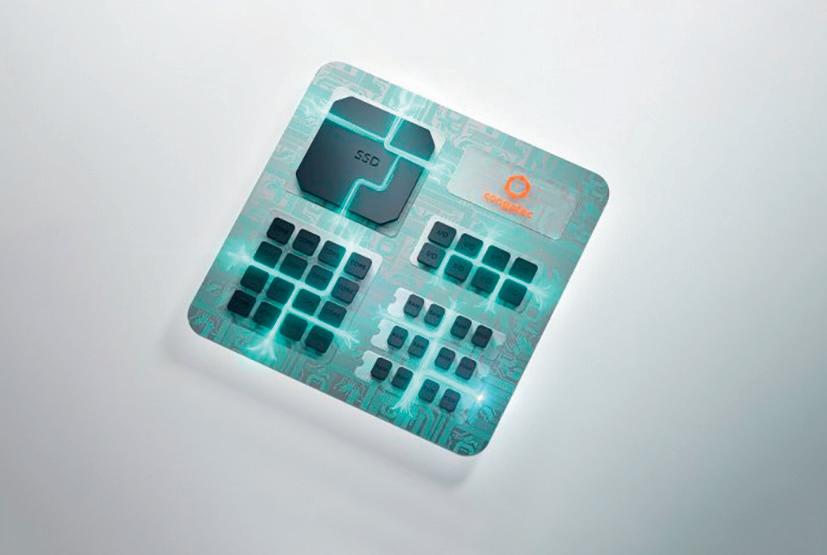
24 MARCH/APRIL 2024 WWW.ELECTRONICSONLINE.NET.AU
TIME-OF-FLIGHT SENSOR
The STMicroelectronics VL53L8CX 8x8 multizone time-of-flight (ToF) ranging sensor is designed to provide ambient-light immunity and low power consumption. The ToF sensors combine a 940 nm vertical cavity surface emitting laser (VCSEL), a multizone SPAD (single-photon avalanche diode) detector array and an optical system comprising filters and diffractive optical elements (DOE) in an all-in-one module. The sensor projects a wide square field of view of 45° x 45° (65° diagonal) and receives reflected light to calculate the distance of objects up to 400 cm away, across 64 independent zones and up to 30 captures/s.

The ToF sensors are designed to boost ranging performance with a new-generation VCSEL and advanced silicon-based meta-optics. The enhancements increase immunity to interference from ambient light, extending the sensor’s maximum range in daylight from 170 to 285 cm and reducing power consumption from 4.5 to 1.6 mW in low-power mode. Due to its 8x8 multizone sensing, the ToF sensor provides uniform sensitivity and ranging throughout the field of view, with an enhanced range in ambient light.
When used for system activation and human presence detection, the sensor’s ambient-light immunity enables equipment to respond quickly. Mobile robots including autonomous vacuum cleaners can leverage the ToF sensor to improve guidance capabilities like floor sensing, small object detection, collision avoidance and cliff detection. The sensor’s synchronisation pin also enables projectors and cameras to benefit from coordinated autofocus. Other features include a motion indicator, an auto-stop feature that allows real-time actions and immunity to cover-glass crosstalk beyond 60 cm. Now supporting SPI connectivity, in addition to the 1 MHz I2C interface, the sensor can handle host data transfers at up to 3 MHz.
The VL53L8CX is available now, housed in a 6.4 x 3.0 x 1.75 mm leadless package.
STMicroelectronics Pty Ltd www.st.com
































WWW.ELECTRONICSONLINE.NET.AU MARCH/APRIL 2024 25
STAINLESS STEEL PANEL PC
The APLEX PhanTAM-816BP/H panel PC from Backplane Systems Technology is designed for environments with stringent hygiene standards. The device focuses on entrylevel applications, especially in food and pharmaceutical industries.
Rated IP66/IP69K, the panel PC is designed to withstand high-pressure, high-temperature water jets, crucial for maintaining hygiene in food automation. The inclusion of a waterproof cover for the wireless antenna, M12 connectors and hygienic bolts (FDA-certified) enhances its water resistance and simplifies cleaning processes. The design also integrates anti-bacteria, anti-corrosion and anti-oxidation properties, supporting a temperature range of -20 to 60°C.
In terms of technical specifications, the panel PC is equipped with versatile ports and expansion slots, including USB, LAN, COM and options for 4G/5G, Wi-Fi/Bluetooth and SSD storage. It supports up to 32 GB DDR4 system memory and offers optional RFID for contactless operations, enhancing hygiene. Its power input ranges from DC 9~36V, and it supports various mounting methods for flexible installation.
Operating on Windows 10 IoT ENT LTSB and Windows 11, the panel PC is suitable for a range of industrial environments. Additionally, the optional explosion-proof film adds to its ruggedness, making it suitable for food factories with extreme temperature variations and intensive cleaning routines. This combination of durability and hygienic design makes the PhanTAM-8B a suitable choice for industries that require cleanliness and efficiency.

EMC_ad_2019.pdf 1 10/05/2023 10:32:41 AM


RADIO FREQUENCY MMIC DEVICES
Richardson RFPD, Inc. has launched a featured line-up of radio frequency MMIC devices from Microchip Technology. Microchip amplifiers, prescalers and control products offer high gain, high linearity, efficiency and low noise. Many Microchip wideband RF products offer a positive gain slope, which acts as a linearity corrector to help overcome system signal losses. This helps enable longer ranges and offer more bandwidth.
The selection of Microchip RF MMICs includes efficient and linear RF power amplifiers that can support up to 31 GHz and improve SWaP (size, weight and power). The MMICs also include GaAs MMIC power amplifier ICs, with broadband power spanning DC to 70 GHz.
Also included are GaAs MMIC low noise amplifier ICs that are designed to support up to 30 GHz, with enhanced noise and linearity performance, multiple product configurations, self-biased topologies and other critical features.
The range of MMIC devices also includes MMIC frequency divider, prescaler ICs to facilitate high-frequency operation up to 40 GHz. A phase frequency detector is also included, with integrated prescalers that are suitable for phase locked loop (PLL) applications.
Richardson RFPD www.richardsonrfpd.com
DUAL-BAND WI-FI 6E MODULE
u-blox has launched JODY-W6, a concurrent dual-band Wi-Fi 6E module with Bluetooth 5.3, including LE Audio, in a compact size (13.8 x 19.8 x 2.5 mm). The module targets automotive use cases in infotainment and navigation, advanced telematics and OEM telematics.

Not only does the module deliver the benefits of Wi-Fi 6E but it also features dual-mode Bluetooth with LE Audio. JODY-W6 is globally certified and can withstand operating temperatures from -40 to 105°C.
The module is available with either two or three antennas. Upon request, it can also integrate an LTE filter. An EVK and an M.2 card will be available for the JODY-W6 series. Furthermore, it is also compatible with previous JODY modules for scalability.
The u-blox JODY-W6 also comes equipped with an embedded NXP Semiconductors AW693 chipset.


The AW693 SoC (system-on-chip) embedded in the automotive JODY-W6 SoM (system-on-module) leverages concurrent dual-band Wi-Fi 6E and Bluetooth LE audio technologies to unlock new opportunities for a range of use cases and businesses in the automotive domain. The AW693 chipset also includes a range of features, such as MU-MIMO, OFDMA and target wake time (TWT). u-blox Singapore Pte Ltd www.u-blox.com
26 MARCH/APRIL 2024 WWW.ELECTRONICSONLINE.NET.AU
Accredited testing and global product approvals since 1992
Bayswater
Backplane Systems Technology Pty Ltd www.backplane.com.au
AMR CONTROLLER
Axiomtek has launched the ROBOX500, a ROS 2 AMR controller designed for navigation and control applications in heavy-duty industries. The robotic control system is powered by the 12th Gen Intel Core i7 processor (code name: Alder Lake P). It provides a 4-channel GMSL interface for low latency and a highresolution camera for long distances. Designed to support a range of sensors, the AMR controller features comprehensive I/O connectivity with an M12 lockable design for secure connection. The ROBOX500 also enables performance across temperatures ranging from -20 to +70°C and can withstand vibration up to 5 Grms. The AMR controller is suitable for heavy-duty autonomous vehicles such as driverless forklifts and autonomous road rollers.
The rugged AMR controller features Intel Iris Xe Graphics with 96 execution units, making it suitable for light AI inference. It also features an M.2 Key M 2242 slot for expanding AI capabilities with an optional AI module. The controller can also take a wide voltage input, from 9 to 60 VDC.
The device features a 4-channel GMSL interface, currently supporting the Intel RealSense D457. The AMR controller can also be bundled with the Ubuntu 22.04 LTS OS environment. In addition, it supports the Axiomtek AMR Builder Package to foster fast time to market. The software package includes ROS 2 nodes with docker images, a web-based management system, AprilTag and shape detection, precise positioning and obstacle avoidance.
The AMR controller also has two DDR4 SO-DIMM slots with up to 64 GB of system memory. One M.2 Key M 2280 slot with a high-speed NVMe interface is available for additional storage needs. For low-latency data transmission and rich expansion, the ROBOX500 supports an M.2 Key E 2230 slot for a Wi-Fi/ Bluetooth module, an M.2 Key B 3052 slot for a 5G module, as well as one SIM slot. A variety of I/O options include two M12 X-code GbE LAN, four M12 A-code USB 3.2 Gen1/USB 2.0 ports, one USB 2.0 port, one USB 3.1 Gen1 port, one DIO (16-CH DI/8-CH DO) with isolation, four 4-wire RS-232/RS-422/ RS-485, one RJ45, two CAN 2.0 A/B with isolation, four GMSL camera interfaces, one HDMI 1.4b, one Micin, one Line-out and four antenna openings.
Tekdis www.tekdis.com.au

METAL LINE INDICATOR
Following the launch of the MSM II switch family, SCHURTER has released the MSM II metal line indicator, made of the same stainless steel as the MSM II switch. As with the redesigned MSM II switch family, the indicator elements are also available in a range of illumination variants: point, ring or surface illumination. This variety offers users innovative ways of visualising their information.
The indictor’s RGB illumination colour range provides a range of illumination colours covering almost the entire spectrum (16.7 million colours) to enable immediate information recognition. From classic white to bright, dynamic colours, the user has a variety of options available to achieve enhanced signalling for their application.

The metal line indicator elements are also designed for operation with a range of voltages (5, 12, 24 VDC or variable) in order to fulfil the most individual requirements. The indicator elements also feature high impact resistance in accordance with the IK08 standard. They are therefore designed to withstand the challenges of tough use over many years.
The entire MSM II range is available in two different installation depths, giving developers the freedom to choose the optimum solution for devices with different installation requirements.
SCHURTER (S) PTE LTD www.schurter.com


WWW.ELECTRONICSONLINE.NET.AU MARCH/APRIL 2024 27
Use our in-house mods operation to meet your project’s requirements Learn more: hammondmfg.com/mods ausales@hamondmfg.com • 08 8240 2244

SOUND-POWERED SENSORS STAND TO SAVE MILLIONS OF BATTERIES
Peter Rüegg, ETH Zurich
Sensors that monitor infrastructure, such as bridges or buildings, or are used in medical devices, such as prostheses for the deaf, require a constant supply of power.
The energy for this usually comes from batteries, which are replaced as soon as they are empty. This creates a huge waste problem. An EU study forecasts that in 2025, 78 million batteries will end up in the rubbish every day.
A new type of mechanical sensor, developed by researchers led by Marc Serra-Garcia and ETH geophysics professor Johan Robertsson, could now provide a remedy. Its creators have already applied for a patent for their invention and have now presented the principle in the journal Advanced Functional Materials
Certain sound waves cause the sensor to vibrate “The sensor works purely mechanically and doesn’t require an external energy source. It simply utilises the vibrational energy contained in sound waves,” Robertsson says.
Whenever a certain word is spoken or a particular tone or noise is generated, the sound waves emitted — and only these — cause the sensor to vibrate. This energy is then sufficient to generate a tiny electrical pulse that switches on an electronic device that has been switched off.
28 MARCH/APRIL 2024 WWW.ELECTRONICSONLINE.NET.AU
The prototype of the sound sensor is relatively large.
Astrid Robertsson/ETH Zurich.
The prototype that the researchers developed in Robertsson’s lab at the Switzerland Innovation Park Zurich in Dübendorf has already been patented. It can distinguish between the spoken words “three” and “four”. Because the word “four” has more sound energy that resonates with the sensor compared to the word “three”, it causes the sensor to vibrate, whereas “three” does not. That means the word “four” could switch on a device or trigger further processes. Nothing would happen with “three”.
Newer variants of the sensor should be able to distinguish between up to 12 different words, such as standard machine commands like “on”, “off”, “up” and “down”. Compared to the palm-sized prototype, the new versions are also much smaller — about the size of a thumbnail — and the researchers are aiming to miniaturise them further.
Metamaterial without problematic substances
The sensor is what is known as a metamaterial: it’s not the material used that gives the sensor its special properties, but rather the structure. “Our sensor consists purely of silicone and contains neither toxic heavy metals nor any rare earths, as conventional electronic sensors do,” Serra-Garcia says.
The sensor comprises dozens of identical or similarly structured plates that are connected to each other via tiny bars. These connecting bars act like springs. The researchers used computer modelling and algorithms to develop the special design of these microstructured plates and work out how to attach them to each other. It is the springs that determine whether or not a particular sound source sets the sensor in motion.
Monitoring infrastructure
Potential use cases for these battery-free sensors include earthquake or building monitoring. They could, for example, register when a building develops a crack that has the right sound or wave energy.
There is also interest in battery-free sensors for monitoring decommissioned oil wells. Gas can escape from leaks in boreholes, producing a characteristic hissing sound. Such a mechanical sensor could detect this hissing and trigger an alarm without constantly consuming electricity — making it far cheaper and requiring much less maintenance.

Sensor for medical implants
Serra-Garcia also sees applications in medical devices, such as cochlear implants. These prostheses for the deaf require a permanent power supply for signal processing from batteries. Their power supply is located behind the ear, where there is no room for large battery packs. That means the wearers of such devices must replace the batteries every 12 hours. The novel sensors could also be used for the continuous measurement of eye pressure. “There isn’t enough space in the eye for a sensor with a battery,” he says.
“There’s a great deal of interest in zero-energy sensors in industry, too,” Serra-Garcia adds. He no longer works at ETH but at AMOLF, a public research institute in the Netherlands, where he and his team are refining the mechanical sensors. Their aim is to launch a solid prototype by 2027. “If we haven’t managed to attract anyone’s interest by then, we might found our own startup.”
This is a modified version of a news item published by ETH Zurich under CC BY-NC-SA 4.0. This version is similarly licensed under CC BY-NC-SA 4.0.

WWW.ELECTRONICSONLINE.NET.AU MARCH/APRIL 2024 29
Marc Serra-Garcia/Amolf ELECTRICAL ENGINEERING
Newer models of the sensor are highly miniaturised and fit on a fingertip.
TRANSCEIVER IC
The STMicroelectronics ST60A3H0 short-range wireless point-to-point transceiver IC removes the need for cables and connectors in accessories and personal electronics like digital cameras, wearables, portable hard drives and small gaming terminals. The IC also addresses data-transfer challenges in industrial applications such as rotating machinery.
As a cable replacement, ST60A3H0 transceiver enables designers to create products with slim, aperture-free cases that can be water-resistant while allowing wireless docking. Self-discovery with instant mating saves pairing, while low power consumption preserves battery runtime. The IC operates in the 60 GHz V-band and provides eUSB2, I2C, SPI, UART and GPIO tunnelling.
The IC also requires minimal energy consumption, as it is designed to consume 130 mW in eUSB rx/tx mode and 90 mW for UART, GPIO and I2C modes, with a 23 µW shutdown mode. As the device can handle exchanges at up to 480 Mbps, wireless connections can deliver cable-like speed and low latency. The transceiver IC is designed for connecting an external antenna, giving flexibility to address diverse applications. It has a small, 2.2 x 2.6 mm footprint.

EFUSE REFERENCE DESIGN
DigiKey now stocks the EFUSE-48V100A reference design product from Vishay. The eFuse features TrenchFET MOSFETs and is designed to handle continuous current up to 100 A. It can operate continuously at maximum current with less than 14 W of losses without requiring active cooling. The eFuse also features a pre-charge function, continuous current monitoring and overcurrent protection.
The eFuse is designed to protect both the user and the hardware in high power applications. In addition to connecting and disconnecting to 48 V power sources like high-energy battery packs, the eFuse also features fast disconnect of loads in under 2 µs, a resettable fuse and an adjustable current limit. It is designed to work in battery management systems, EV test environments, solar installations, industry and home automation, industrial and server computing, networking, telecom and base station power supplies.
Digi-Key Electronics www.digikey.com

environmental hazards such as dust and humidity. The device is also suitable for mobile equipment like robotic arms. Being free from mechanical wear, the transceiver’s lifetime is not limited by the number of rotations.
The transceiver is easy to use without installing software drivers or a protocol stack. In addition to enhancing end-user experiences, it also enables efficient contactless product testing and debugging, including loading firmware over the air (FOTA), during manufacture and after sales.
The ST60A3H0 is in full production and is covered by ST’s 10-year product-longevity program.
STMicroelectronics Pty Ltd www.st.com
MEDICAL PANEL PC
Avalue Technology Inc. has launched the HID-2340, a medical panel pc that is powered by Intel’s 12th generation Alder Lake processor and backed by medical-grade certification. Designed to meet the needs of the healthcare industry, the medical panel PC delivers a range of advanced computing solutions. Its processor enables high performance, allowing healthcare professionals to manage medical data, access electronic health records and run resource-intensive applications.
The medical panel PC, with its medical-grade certification UL60601-1, is designed to provide security in healthcare environments and improve the quality of patient care and operational efficiency across a range of medical applications.
The medical panel PC also features a Trusted Platform Module (TPM) and NFC/RFID module, to facilitate data security and controlled system access. Allowing the use of medical gloves on its P-Cap multi-touch screen, the device offers adjustable brightness and volume for maximum control. A convenient reading light further assists users in low- or no-light conditions.
Featuring 1 COM, 2 LAN, 1 USB 2.0, 3 USB 3.0, 1 USB Type C and 1 x M.2 Key B 3042/3052/2280, 1 x M.2 Key E for WiFi, 1 x M.2 Key M for storage for expansion, the device also provides expanded connectivity options for diverse medical applications.
With M.2 capture card expansion and support for SDI/HDMI connectors, the HID-2340 also meets various device requirements, enhancing medical image capture and video integration. The medical panel PC’s antimicrobial finishing and full flat front design also enhances ease of alcohol cleaning. Avalue
www.avalue.com.tw
30 MARCH/APRIL 2024 WWW.ELECTRONICSONLINE.NET.AU

ENCLOSURES
Electronic enclosures specialist OKW has extended its range of ergonomic plastic housings for smart building services systems. The OKW SOLID-BOX (IP 66, IP 67, IK 08) is designed for smart building technology in challenging industrial and outdoor environments. These PC+ABS (UL 94 V-0) enclosures can be installed ‘lid closed’ to protect the seal and electronics from dust or water ingress.
OKW has also added a new size to its SMART-PANEL range of ABS+PC (UL 94 V-0) wall-mounted enclosures for touch screens and other building control technology. The SMART-PANEL fits standard flush-mounted/cavity wall boxes, blending into residential, commercial and industrial environments. New size S114 (114 x 114 x 21.3 mm) complements existing sizes 84 x 84 x 21.3 mm and 155 x 84 x 21.3 mm.
There is also a new standard colour option for OKW’s MINI-DATA-BOX (IP 65 optional) range of fast-fit flanged enclosures. These ASA+PC (UL 94 V-0) enclosures are available with (or without) flanges so they can be cable-tied to poles or screw-fitted to flat surfaces. The flanged version is also available with a traffic white (RAL 9016) top and a traffic grey A (RAL 7042) base, in addition to the existing traffic white and anthracite grey (RAL 7016) options.
Other OKW enclosures for building services systems include wedge-shaped SMART-CONTROL for corner-mounted/desktop electronics and slim NET-BOX wall-mount enclosures for control units and network nodes.
OKW can supply enclosures fully customised. Services include machining, lacquering, printing, laser marking, decor foils, special materials, EMC shielding and installation/assembly of accessories.
ROLEC OKW Australia New Zealand P/L www.okw.com.au




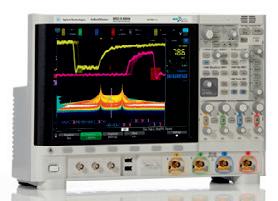




WWW.ELECTRONICSONLINE.NET.AU MARCH/APRIL 2024 31
EXPANDABLE INDUSTRIAL COMPUTER
Backplane Systems Technology now offers the iBase CMB108, an industrial computer that is designed to meet the demands of various industrial applications. At its core, it harnesses the power of the 13th/12th Gen Intel Core i9/i7/i5/i3 DT processors (TDP 65W). This is further enhanced with two DDR54800/5600 U-DIMM slots, supporting up to 64 GB of memory, to facilitate the swift and efficient handling of complex tasks.

MOTHERBOARD
Avalue Technology Inc. has launched the BC680R ATX motherboard, equipped with Intel 12th/13th generation Alder Lake and Raptor Lake platforms. The motherboard can be used with Intel Core i9/ i7/i5/i3/Pentium or Celeron processors depending on the application requirements. Designed with high-speed transmission, multiple expansion options and a wide temperature range, the motherboard offers users an efficient way to build a solution that is suitable for the harsh environment of industrial applications. The motherboard is designed to meet the upgrade needs of industrial manufacturing, automotive electronics, military, medical and other fields.
The expandable industrial computer supports discrete GPU cards, a requirement for high-end industrial applications that require superior graphics performance. The system offers a variety of expansion slots, including 1x PCI-E(x16) [PCI-E Gen.5], 1x PCI-E(x4) [PCI-E Gen.4] and 1x PCI-E(x4) [PCI-E Gen.3], providing ample room for additional hardware enhancements. Encased in a robust frame measuring 362(W) x 350(D) x 156(H) mm, the expandable industrial computer is powered by a 500 W 1U Flex ATX power supply for performance in diverse industrial environments.
The expandable industrial computer also supports multiple display interfaces such as HDMI, DisplayPort and DVI-D, alongside 2.5GbE ports and USB 3.0 ports for rapid data transfer. Storage options are extensive, with the capacity to house up to 4 sets of 2.5” storage devices with RAID 0/1 support.
Additionally, it includes 2x M-Key (2280) slots for NVMe, 1x E-Key (2230) for WiFi/BT (supporting CNVi) and 1x B-Key (3052) for 5G connectivity, catering to the increasing need for fast and efficient data processing and storage. The CMB108 is also equipped with fTPM, DIO, iAMT(16.1) and a watchdog timer. The inclusion of a 2-pin remote boot extension design enhances its adaptability in various industrial scenarios. Backplane Systems Technology Pty Ltd www.backplane.com.au

WI-FI 6 MODULE
The motherboard features the Intel R680E chipset with the LGA 1700 socket, supporting processors up to 65 W thermal design power. Users can choose from different performance Intel Core processors depending on the industrial application requirements. The motherboard also features multiple high-speed transmission interfaces, including 2.5G Ethernet interfaces, USB 3.2 Gen 2, multiple PCIe and M.2 NVMe slots, providing flexibility for expansion. The motherboard is designed to operate in environments ranging from 0 to 60°C, meeting the requirements of computing and data storage solutions.
The motherboard supports up to 128 GB DDR5-4400 MHz memory with ECC memory slots for efficient system operation. It provides 4 SATA III or 2 M.2 NVMe SSD slots, increasing storage configuration flexibility. For networking, it offers two 2.5G network and M.2 CNVi slots for high-speed data transfer to enhance workload efficiency. In addition, the BC680R can drive four displays simultaneously, including 2 HDMI and 2 DP++ display output interfaces, providing high-resolution 4K@60 Hz display effects.
The motherboard supports multiple interface expansions, with a widetemperature design that makes it suitable for demanding environmental applications. Enhanced data security is provided by Trusted Platform Module (TPM) 2.0 technology, offering more choices for industrial applications and supporting the upgrade to industrial intelligence.
Avalue
www.avalue.com.tw

u-blox has launched the NORA-W4 module, featuring a range of wireless technologies (Wi-Fi 6, Bluetooth LE 5.3, Thread and Zigbee) and a compact form factor (10.4 x 14.3 x 1.9 mm). The module is suitable for IoT applications such as smart home, asset tracking, health care and industrial automation.
The single-band tri-radio Wi-Fi 6 module is built on the Espressif ESP32-C6 system-on-chip. It enables battery-powered IoT nodes to operate directly over Wi-Fi. This simplifies implementation by limiting the need for a Bluetooth gateway, making it suitable for applications like wireless battery-operated sensors.
The module uses Wi-Fi 6 technology that is enhanced for IoT and reduces network congestion in environments such as factories, workplaces or warehouses, thereby improving throughput and reducing latency. Fully backward compatible with Wi-Fi 4, the module can also be used in cases where the Wi-Fi infrastructure has not been upgraded.
The module also supports Matter protocol, Thread and Zigbee technologies that are designed for new applications in the smart home environment. Consequently, it allows interoperability with other Matter smart home devices.
The module’s compatibility with other u-blox NORA modules facilitates technology migration, such as transitioning from Wi-Fi 4 to Wi-Fi 6. In addition, the module includes enhanced security features, such as secure boot, trusted execution environment and flash encryption. NORA-W4 is available in six different variants: open CPU or u-connectXpress, antenna pin or PCB antenna, and with either 4 or 8 MB flash memory.
u-blox Singapore Pte Ltd www.u-blox.com
32 MARCH/APRIL 2024 WWW.ELECTRONICSONLINE.NET.AU
LITHIUM BATTERY FAST-CHARGING
SEEKS TO ELIMINATE
RANGE ANXIETY
David Nutt, Cornell Chronicle
Ateam in Cornell Engineering created a new lithium battery that can charge in under five minutes — faster than any such battery on the market — while maintaining stable performance over extended cycles of charging and discharging.
The breakthrough could alleviate range anxiety among drivers who worry electric vehicles cannot travel long distances without a time-consuming recharge.
“Range anxiety is a greater barrier to electrification in transportation than any of the other barriers, like cost and capability of batteries, and we have identified a pathway to eliminate it using rational electrode designs,” said Lynden Archer, Cornell’s James A. Friend Family Distinguished Professor of Engineering and Dean of Cornell Engineering, who oversaw the project. “If you can charge an EV battery in five minutes, I mean, gosh, you don’t need to have a battery that’s big enough for a 300-mile range. You can settle for less, which could reduce the cost of EVs, enabling wider adoption.”
The team’s paper, ‘Fast-Charge, LongDuration Storage in Lithium Batteries’, was published in Joule. The lead author is Shuo Jin, a doctoral student in chemical and biomolecular engineering.
Lithium-ion batteries are among the most popular means of powering electric vehicles and smartphones. The batteries are lightweight, reliable and relatively energy-efficient. However, they take hours to charge, and lack the capacity to handle large surges of current.
“Our goal was to create battery electrode designs that charge and discharge in ways that align with daily routine,” Jin said. “In practical terms, we desire our electronic devices to charge quickly and operate for extended periods. To achieve this, we have identified a unique indium anode material that can be effectively paired with various cathode materials to create a battery that charges rapidly and discharges slowly.”
Archer’s lab previously approached battery design by focusing on how ions move in electrolytes and crystallise at interfaces of metal anodes, then used this knowledge to manipulate the electrode morphology to make safer anodes for long-duration storage.
For their new lithium battery, the researchers took a different tack and focused on the kinetics of electrochemical reactions, specifically employing a chemical engineering concept termed the “Damköhler number”. This is essentially a measure of the rate at which chemical reactions occur, relative to the rate at which material is transported to the reaction site.
Identifying battery electrode materials with inherently fast solid-state transport rates, and hence low Damköhler numbers, helped the researchers pinpoint indium as an exceptionally promising material for fastcharging batteries. Indium is a soft metal, mostly used to make indium tin oxide coatings for touch-screen displays and solar panels. It is also used as a replacement for lead in low-temperature solder.
The new study shows indium has two crucial characteristics as a battery anode: an extremely low migration energy barrier, which sets the rate at which ions diffuse in the solid state; and a modest exchange current density, which is related to the rate at which ions are reduced in the anode. The combination of those qualities — rapid diffusion and slow surface reaction kinetics — is essential for fast charging and long-duration storage.
“The key innovation is we’ve discovered a design principle that allows metal ions at a battery anode to freely move around, find the right configuration and only then participate in the charge storage reaction,” Archer said. “The end result is that in every

charging cycle, the electrode is in a stable morphological state. It is precisely what gives our new fast-charging batteries the ability to repeatedly charge and discharge over thousands of cycles.”
That technology, paired with wireless induction charging on roadways, would shrink the size — and the cost — of batteries, making electric transportation a more viable option for drivers.
However, that doesn’t mean indium anodes are perfect, or even practical.
“While this result is exciting, in that it teaches us how to get to fast-charge batteries, indium is heavy,” Archer said. “Therein lies an opportunity for computational chemistry modelling, perhaps using generative AI tools, to learn what other lightweight materials chemistries might achieve the same intrinsically low Damköhler numbers. For example, are there metal alloys out there that we’ve never studied, which have the desired characteristics? That is where my satisfaction comes from, that there’s a general principle at work that allows anyone to design a better battery anode that achieves faster charge rates than the state-of-the art technology.”
WWW.ELECTRONICSONLINE.NET.AU MARCH/APRIL 2024 33
iStock.com/Cinefootage Visuals ELECTRIFICATION
WEARABLE STICKER
ENABLES COMMUNICATION THROUGH GESTURES
Researchers have developed a wearable sensor that allows users to turn their hand or finger movement into communication without having to say a word or tap a touchscreen.
The sensor could open new possibilities for rehabilitation applications and help those with disabilities communicate more easily.
The sensor combines a soft and flexible material called polydimethylsiloxane, or PDMS, with an optical component known as a fiber Bragg grating (FBG). The sensor is designed to be comfortable for long-term wear while having the ability to detect movements with accuracy.
Kun Xiao from Beijing Normal University said the sensors could translate gestures or facial expressions into words or commands, enabling those with severe mobility or speech issues to communicate with others or interact with technology more easily. “For someone recovering from a stroke, these sensors could monitor wrist, finger or even facial movements to monitor their rehabilitation progression,” Xiao said.
The cross-disciplinary team of researchers from Beijing Normal University, Sun Yat-sen University and Guilin University of Electronic Technology described the new sensor in the journal Biomedical Optics Express. The sensor reportedly shows a high level of sensitivity and accuracy during tests involving gesture recognition and communication assistance. Researchers believe that the sensors could be tailored for applications such as monitoring other health indicators like respiratory or heart rate by detecting subtle body movements. They could also be useful for athletes or fitness enthusiasts to monitor and improve their form or technique in real time.
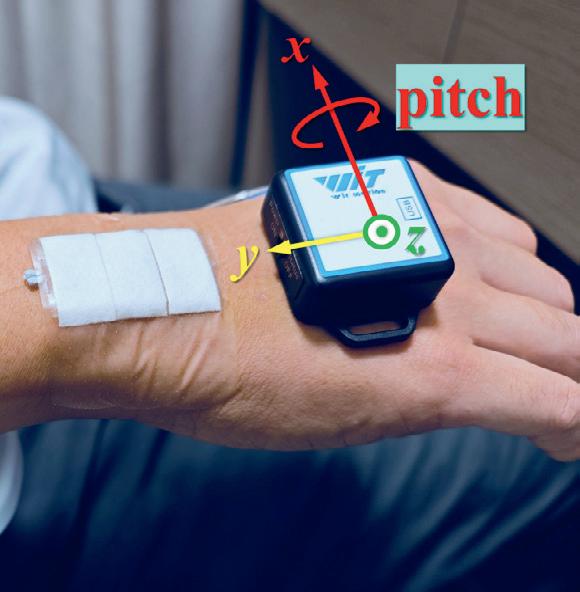
The researchers used PDMS, a type of silicone elastomer that is flexible and skin friendly, to develop the sensor. This enables the sensor to be worn for long periods without irritation or discomfort. To give the sensor its movement-sensing capability, the researchers embedded the PDMS with FBGs, a type of reflector that is etched into a short segment of optical fibre to reflect specific wavelengths while transmitting all the others. The sensor makes it possible to detect slight changes in the way light propagates through the fibre optic during movement, allowing the system to detect specific movements by analysing the alterations in light behaviour.
When developing the sensor, the researchers found that using a thicker PDMS patch caused a more pronounced wavelength shift. Leveraging this sensitivity-enhancing effect of PDMS allowed the optical sensors to detect subtle movements, like the bend of a finger. The sensors can be applied to various parts of the body for a range of applications. The researchers are also developing a calibration method that allows the sensors to be tailored to each user, making them adaptable to various applications.
Westwick-Farrow Media
A.B.N. 22 152 305 336
www.wfmedia.com.au
Head Office
Unit 5, 6-8 Byfield Street, North Ryde
Locked Bag 2226, North Ryde BC NSW 1670
Ph: +61 2 9168 2500
Senior Editor
Lauren Davis
Editor
Ashna Mehta wnie@wfmedia.com.au
Acting Publishing Director/MD Janice Williams
Art Director/Production Manager Linda Klobusiak
Art/Production Marija Tutkovska
Circulation Dianna Alberry circulation@wfmedia.com.au
Copy Control Mitchie Mullins copy@wfmedia.com.au
Advertising Sales
Account Manager
Sandra Romanin – 0414 558 464 sromanin@wfmedia.com.au
Asia
Tim Thompson - 0421 623 958 tthompson@wfmedia.com.au
If you have any queries regarding our privacy policy please email privacy@westwick-farrow.com.au
Printed and bound by Dynamite Printing
Print Post Approved PP100007394
ISSN No. 0728-3873
All material published in this magazine is published in good faith and every care is taken to accurately relay information provided to us. Readers are advised by the publishers to ensure that all necessary safety devices and precautions are installed and safe working procedures adopted before the use of any equipment found or purchased through the information we provide. Further, all performance criteria was provided by the representative company concerned and any dispute should be referred to them. Information indicating that products are made in Australia or New Zealand is supplied by the source company. Westwick-Farrow Pty Ltd does not quantify the amount of local content or the accuracy of the statement made by the source.
34 MARCH/APRIL 2024 WWW.ELECTRONICSONLINE.NET.AU
FLEXIBLE ELECTRONICS
Researchers have developed a wearable PDMS sensor that uses an FBG to sense movements. The sensors could be used to monitor wrist, finger or even facial movements.
Kun Xiao, Beijing Normal University in China.







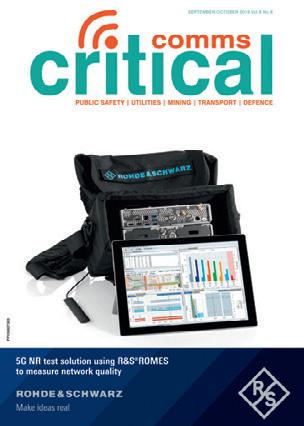



www.WFMedia.com.au/subscribe FREE
industry
business professionals The magazine you are reading is just one of 11 published by Westwick-Farrow Media. To receive your free subscription (magazine and eNewsletter), visit the link below.
to
and












































































































































